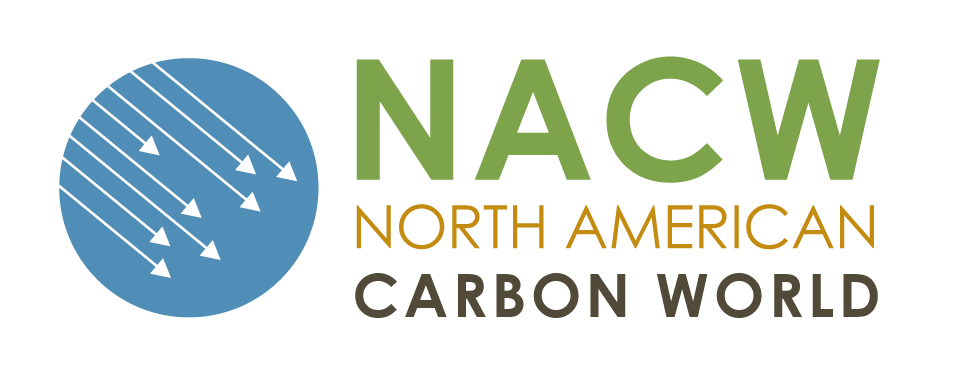The U.S. Forest Protocol (FP) provides guidance for the development of forest carbon projects. The FP addresses eligibility and accounting requirements for the calculation of emissions removals and reductions associated with reforestation, improved forest management, and avoided conversion projects.
For information about the role of forest carbon for California’s Cap-and-Trade Program, please refer here. For information and documents related to compliance projects, please refer here.
For information about the Reserve’s Climate Forward Reforestation Forecast Methodology, please refer here.
| Current Protocol Version | Adoption Date | Notes and Supporting Documents |
|---|---|---|
| Version 5.1 | July 20, 2023 | Available for project submission. |
Protocol Supporting Documents
The documents and tools below are companions to the protocol and must be used for project development and verification oversight. Forms for requesting verification or project development assistance are found below.
| Document/Tool | Description | Project/Protocol Version Relevance | |
|---|---|---|---|
|
Annual Monitoring Calculation and Harvested Wood Products Worksheets |
The Annual Monitoring Calculation Worksheet and the Harvested Wood Products Worksheet are Microsoft Excel tools for inputting project data and calculating project-related data, including CRTs. They are designed to help forest project developers organize their project data and facilitate verification. Copies of the worksheets are required as part of annual monitoring and must be included with the Monitoring Report. These tools are made available to account holders upon request. To receive a copy, please send an e-mail to [email protected].
In the body of the e-mail message, please include the following information:
|
Required for 3.0 and later projects. The Reserve will work with earlier projects to ensure previous reporting can be modified to the current version. | |
| The Assessment Area Data File provides data to calibrate protocol requirements to projects based on the forest communities in which the project is located. | Required for all FP Versions 3.0 and later. | ||
| Biomass Equations | The biomass equations have been obtained from the United States Forest Service Forest Inventory and Analysis (FIA) National Program. The equations are the same equations used to generate the Common Practice estimate for each Assessment Area (by site class where applicable). Project Developers must use these same equations for their projects. | Required for all FP Versions 3.0 and later. | |
| Batch 1.0 | Optional for projects listed prior to March 25, 2011. | ||
| Batch 1.1 | Required for all projects listed after March 25, 2011 and optional for previously listed projects. | ||
| Batch 2.0 | Required for projects listed June 28, 2017 or later. | ||
| Climate Action Reserve Inventory Tool (CARIT) | CARIT is a Microsoft Access-based data management tool for inputting, growing, calculating, and reporting forest carbon inventory data. It is a pre-approved, validated tool designed to reduce time, effort, and cost for project development, management, and verification. CARIT allows users to manage a full inventory over the life of the project, can be linked to the USFS Forest Vegetation Simulator (FVS), and has several automated functions for annual project reporting. For more information about CARIT (and SIM), please click here.
CARIT is made available to account holders upon request. To receive a copy, please send an e-mail request to [email protected]. To view a video demonstrating use of CARIT, please click here. |
optional, for FP Version 4.0 and later | |
| Default Baseline Screening Tool v1 | A tool to determine whether an IFM project may use the Default Baseline Approach described in Section 6.1.1 | Optional for FP Version 5.0. | |
| Preliminary Improved Forest Management Project Feasibility Tool | This tool is provided by the Climate Action Reserve to provide a broad assessment of Improved Forest Management project feasibility from financial and eligibility perspectives. This tool can be used to assess feasibility for a compliance or voluntary forest carbon project. Please note, the results of the evaluation does not guarantee program eligibility and does not constitute financial or legal advice. We encourage all users to contact the Reserve at any time as they consider developing a project. Please visit the Reserve’s CRT Marketplace page for industry resources and contacts who can provide detailed cost/benefit analysis and project development proposals. | Optional, not required for any version of the protocol. | |
|
Project Implementation Agreement (January 29, 2024) |
The PIA is a legal agreement between the Reserve and a Forest Owner setting forth: (i) the Forest Owner’s obligation (and the obligation of its successors and assigns) to comply with the U.S. Forest Protocol, and (ii) the rights and remedies of the Reserve in the event of any failure of the Forest Owner to comply with its obligations. | Required for all Versions 3.0 and later. | |
| Quantification Guidance | Guidance for quantifying a Forest Project’s onsite carbon stocks and carbon in harvested wood products, both for purposes of estimating a project’s baseline as well as providing ongoing estimates of onsite project carbon stocks throughout the project life. | Version 4.0 | |
| In 2010, the Reserve released final guidelines for aggregating smaller forest projects with a goal of making smaller projects more cost-effective. | Projects submitted under Version 3.0 – 5.0 are eligible to aggregate under these rules. | ||
|
Sequential Sampling Verification Workbook |
A Microsoft Excel-based tool to be used by verifiers. If you need an earlier version of the tool for sequential sampling of soil carbon or optional sequential sampling of v3.0-3.2, please send your request to [email protected]. | Version 5.0 | |
| Standardized Inventory Methodology
(June 13, 2018) |
A pre-verified inventory methodology available for optional use for Forest Projects. Use of the Standardized Inventory Methodology (SIM) and the options it contains will streamline the verification process by allowing verifiers to focus more on proper and accurate implementation rather than on the overall soundness of the methodology and conformance to the U.S. Forest Protocol. For more information about SIM (and CARIT), please click here. | Optional for all versions of the U.S. Forest Protocol. | |
| Standardized Inventory Methodology – Appendix B
(June 13, 2018) |
Excel file containing a table listing the alphabetic species codes from the USDA PLANTS database recommended for recording tree species as a part of field sampling under the SIM. Also listed are the scientific name, common name, and USFS FIA species code associated with each USDA PLANTS code. USDA PLANTS and USFS FIA codes are both compatible with CARIT (upcoming release). | For use by projects utilizing the SIM. | |
| Standardized Inventory Methodology – Appendix D
(June 13, 2018) |
Excel file of a sample plot card containing the minimum data fields required for plot data collected for inventories sampled under the SIM. The form may be used as is or may serve as a template to which additional fields may be added to suit the management needs of Project Operators. | For use by projects utilizing the SIM. | |
| Supplemental Verification Methodology – Sequential Sampling
(July 3, 2012) |
Supplemental guidance required for the verification of soil carbon estimates (if included) in Avoided Conversion projects. The verification method may be applied to other sampled carbon pools. | Optional for verification of all (non-soil) sampled and credited carbon pools in all previous versions of the protocol. | |
| Verification of Forest Carbon Project Plots Using Sequential Statistical Methods by Tim Robards, PhD | This is a reference paper used to provide a statistical approach to checking plots as part of the CAR verification process. Sequential statistical methods are used to collect plot data until a threshold is reached where a decision may be made as to the adequacy of the plot data. | Can be used as a resource when using sequential sampling methods. | |
Project Registration Documents
(Improved Forest Management, Reforestation, Avoided Conversion)
| Document | Description | Required Phase | Privilege |
|---|---|---|---|
| Forest Project Submittal Form (Avoided Conversion) | A proposal to undertake an Avoided Conversion project. | Project Submittal | Public |
| Forest Project Submittal Form (Improved Forest Management) | A proposal to undertake an Improved Forest Management project. | Project Submittal | Public |
| Forest Project Submittal Form (Reforestation) | A proposal to undertake a Reforestation project. | Project Submittal | Public |
| Offset Project Listing Information Form – Compliance Protocol | Project Listing Information Form for submitting a compliance offset project under the California Air Resources Board compliance protocol for forest projects. | Project Submittal | Public |
| Physical Boundary Map | A map that shows the physical boundary for the project. It should illustrate:
|
Project Submittal | Public |
| Project Design Document | A standard document for reporting required information about a forest project. The Project Design Document must be submitted for review by a verifier and approved by the Reserve before the forest project can be registered with the Reserve. | Verification | Public |
| Annual Monitoring Report | A report stating the project’s estimated annual carbon stocks, attesting that the project is carrying out the intended project activities, and confirming that the project’s carbon stocks are increasing or decreasing in accordance with initial projections. | Verification | Public |
| Inventory Methodology Update Request | A form for project operators to request changes to an existing project’s inventory methodology. Changes are subject to Reserve review and approval. | Verification | Private |
| Real Estate Appraisal | This report is only required for Avoided Conversion projects to disclose information to satisfy the performance test. | Verification | Private |
U.S. Forest Protocol Development
In response to a mandate set out in California Senate Bill 812 (Sher, 2002) the Climate Action Reserve began work on a set of Forestry Protocols in April 2003. The development of the U.S. Forest Protocol has evolved over time as the Reserve has worked closely with stakeholders, forest experts, environmental organizations and government agencies to update, improve and expand the protocol. Please click the link below for more information on the development process for each version of the protocol.
U.S. Forest Protocol Development
Protocol White Papers
The Reserve commissioned the development of white papers that address topics relating to carbon accounting of optional pools, criteria for sustainable forest management and natural forest management, and assessing forest project eligibility on federal lands. Please click the link below for more information.
U.S. Forest Protocol White Papers
Previous versions
| Protocol Version and Link to Further Information | Adoption Date | Notes and Supporting Documents |
|---|---|---|
| Version 5.0 | October 16, 2019 | Available for project submission.
Errata and Clarifications for U.S. Forest Protocol Version 5.0 (April 9, 2021) |
| Version 4.0 | June 28, 2017 | Available for reforestation project submission. No longer available for improved forest management or avoided conversion project submission.
Errata and Clarifications for U.S. Forest Protocol Version 4.0 |
| Version 3.3 | November 15, 2012 | No longer available for project submission. |
| Version 3.2 | August 31, 2010 | No longer available for project submission.
Errata and Clarifications to U.S. Forest Protocol Version 3.2 (October 29, 2014) |
| Version 3.1 | October 22, 2009 | No longer available for project submission.
Errata and Clarification to U.S. Forest Protocol, Version 3.1 |
| Version 3.0 | September 1, 2009 | No longer available for project submission.
Errata and Clarifications to U.S. Forest Protocol Version 3.0 (October 29, 2014) |
| Version 2.1 | September 6, 2007 | No longer available for project submission. |
| Version 1.0 | June 13, 2005 | No longer available for project submission. |




